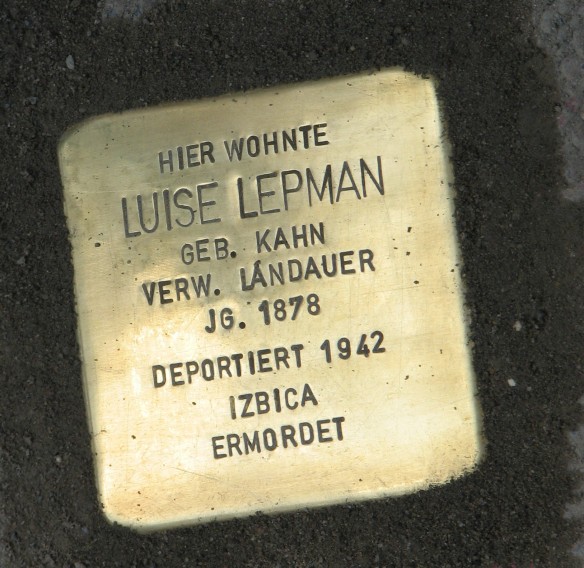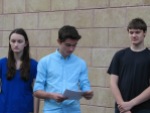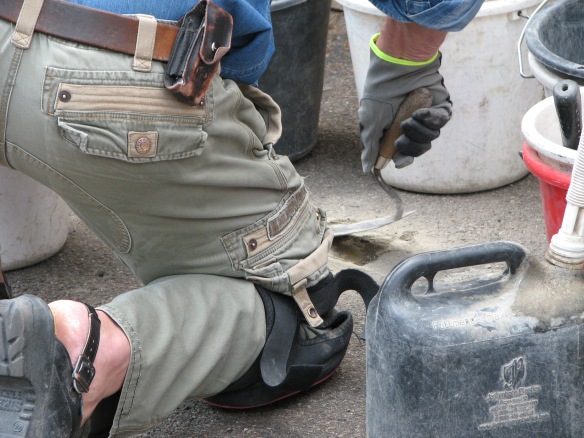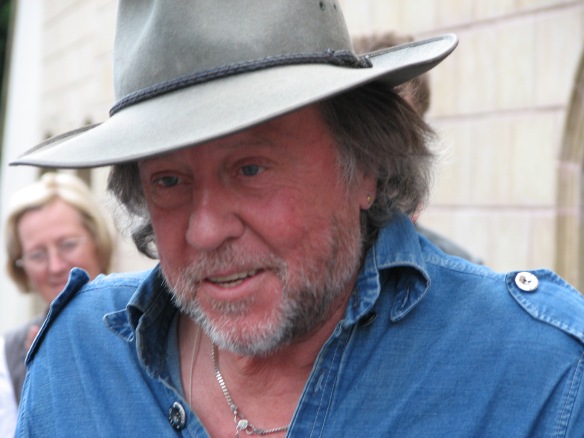I have to relearn how to feel. My mother-in-law went into the hospital with a lung infection for a long week and a half. She rallied, and returned to the nursing home. I finished my third novel Grounded and began preparing it for publication on Amazon. Then Mama grew weaker again. A few days later we got the call we’d been expecting. The home phoned and said that we should come. Uwe and I had the blessing of being at her side as she died. Less than 48 hours later, my book became available.
We were busy with all the details that follow a death. People had to be contacted, and a funeral arranged, and Mama’s body transported to the town where she would be interred next to Uwe’s father. We drove down to meet with the funeral hall director and a pastor, and to visit Mama’s sister and her family. We cleaned out her room in the nursing home, sorted through the little that remained, moved furniture. The book would wait. I’d celebrate its release later. And I wanted to stay strong and present for Uwe, because these are the moments when your partner is so much more important than anything else.
When we finally got done with all the details a few days ago, I turned my attention back to a very special project that will take place next Monday, June 6th. My first-ever writing commission has been to write a story to connect an evening of Gershwin songs. In February I wrote in a 2-week blaze of inspiration for NEAT, the New English American Theater in Stuttgart. The four singers and a pianist rehearsed the songs. A Welsh actor will read my story. All I have to do is show up and sit in the audience and marvel and enjoy the talent on the stage.
I went to a rehearsal a few nights ago and heard my story spoken aloud for the first time. It is a surreal experience to hear one’s creative work interpreted and combined into a greater artistic work. I was speechless as I watched and listened. Up to that night, I’ve been numb. I figured I could finally allow myself to feel proud, to be satisfied with all the hard work I’ve done with my writing. I gave myself permission to be excited about my book and the Gershwin evening. But when I let myself open up to feeling something emotional, a tidal wave of grief hit me. I’m mourning my mother-in-law of course. I’m grieving for her, even knowing she was ready to go and had given us the gift of waiting until we got to her bedside to leave us. One of us, Uwe or I, have visited her pretty much every other day for the two years that she lived in the nursing home near us. I don’t have to feel bad about not seeing her enough, or caring enough. But I write this in the present tense, because it’s all occurring in real time still. The birth of my book, the death of Mama, the use of my words to connect the magic of timeless songs, it all weaves together for me, I can’t separate out any of the strands. I’m a hot mess, trying to remember how to feel again. I remind myself that any one of these emotions is huge, fraught with anticipation and months or years of living and taking form and interconnecting with hopes and expectations. Love, sorrow, hope, creativity, illness, dying, death, coming into being, leaving this earthly plane…. Trying to remember how to feel any one of these emotions, let alone all of them all at once, overwhelms me.
But mostly, mostly, perhaps what I feel is gratitude. To know what I have in my mother-in-law and my art. To literally feel in body and soul how it all connects. To be able to feel again, even if it leaves me in tears.
And to know I’ve got a lot more tears in me.
NOTES: In loving memory of Margaretha Hartmann.












 Don’t ask me where these visions came from. All I know is that when I made my appointment at Das Leuze Spa in Bad Cannstatt, Germany, this was what I hoped to experience.
Don’t ask me where these visions came from. All I know is that when I made my appointment at Das Leuze Spa in Bad Cannstatt, Germany, this was what I hoped to experience.

